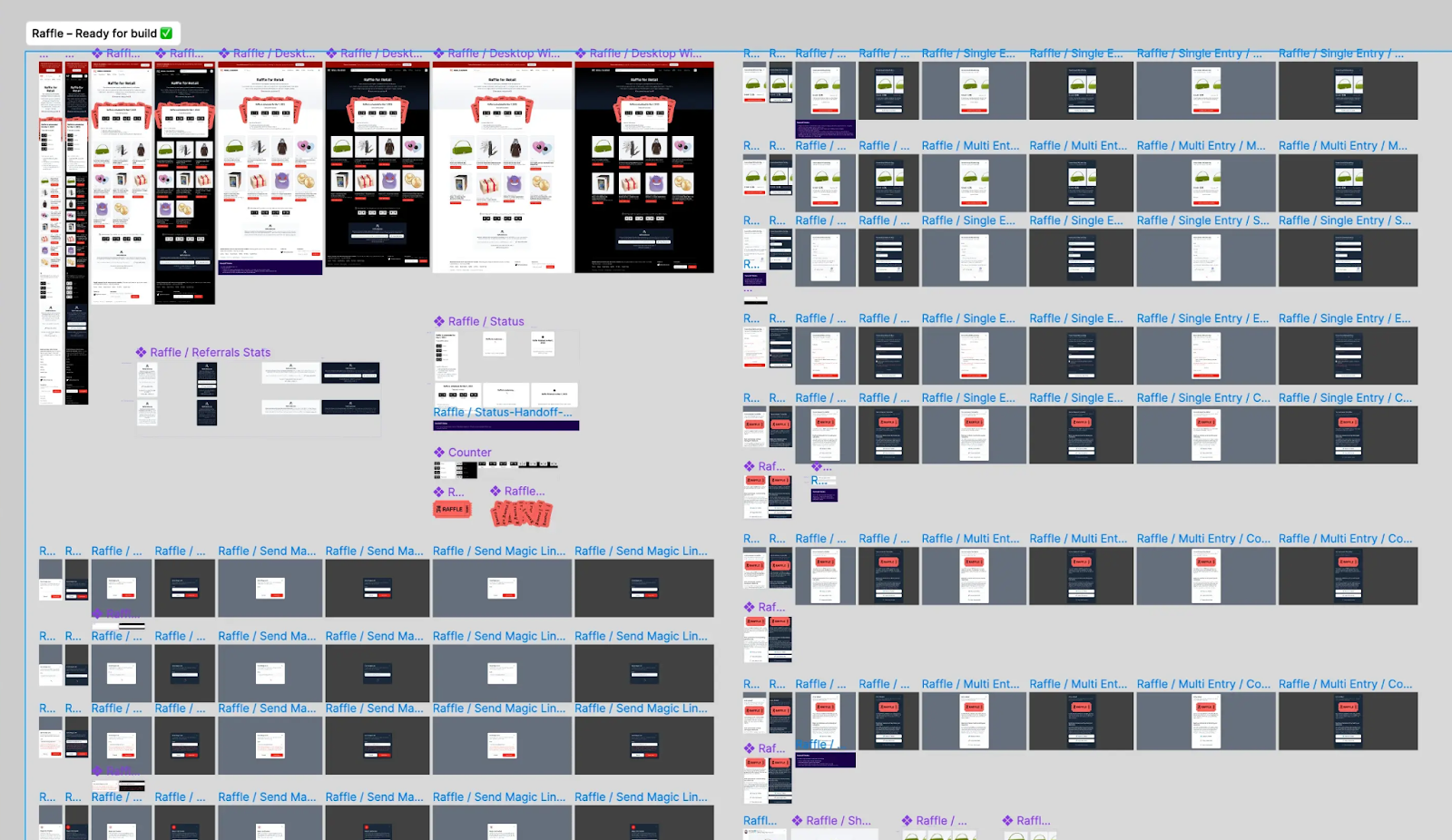Startups: How to Avoid Bad Product Design

Young companies can’t afford to make mistakes: An estimated 90% of startups fail, according to the research and policy advisory group Startup Genome. That’s not because they have bad ideas, but because they execute them poorly, without setting a clear product design vision and adequately satisfying user needs and market expectations. In my experience, this is how good—even ingenious—ideas can fail miserably.
Over the past 15 years as a multidisciplinary product designer, I’ve worked with dozens, if not hundreds, of startups and have had an up-close view of how strategic missteps can derail a startup’s plans for growth and longevity.
Often, problems begin with an overreaching project scope and a failure to test and validate concepts with prospective users before committing them to code. When problems mount and there is a lack of clarity surrounding organizational roles and resource allocations, they quickly grow worse. Time and money are lost as teams scramble to retool features that should have been aligned from the beginning. Or, worse, if no one sounds an alarm, the product arrives on the market only to be ignored or discredited by potential customers.
7 Product Design Mistakes to Avoid
Spotting danger while it’s on the horizon—not days or weeks before a launch—often makes the difference between a startup securing crucial funding or seeing its flagship product languish in Internet obscurity. Here, I present seven pitfalls that can put a company on a dangerous course—and how product owners and designers can be a voice for corrective action before it’s too late.
1. Mistaking a Minimum Viable Product for a “Maximum” Viable Product
A bloated minimum viable product (MVP) is the Achilles’ heel of many failed startups. Properly conceived, an MVP is the most bare-bones, functional version of a product capable of delivering value to users. By releasing a salable product with just its essential features, startups keep development costs in check and collect feedback from early adopters before investing further. But too often, companies overreach. Whether due to hubris, inexperience, or some combination of the two, they overload an MVP with features or rush to release it across multiple platforms.
One of two scenarios typically plays out: Either plans for glitzy, overblown feature sets or flash-in-the-pan interface elements collapse when the budget runs dry, or products are pulled together in slapdash fashion, resulting in design defects and usability flaws that aggravate users and require costly rework to fix.
To avoid bad product design, I advocate for an MVP approach similar to the one used to deploy the initial release of Midjourney’s generative AI-powered image creator. To limit development costs and collect user feedback, the design team chose to deliver the app’s core functionality via interaction with a bot on Discord’s chat-based user interface. Subscribers simply type the /imagine command and a short text prompt to create a grid of four unique images that can be scaled and touched up. Midjourney’s website does offer additional functionality like searching for images generated by other users and archiving images in a collection, but the software’s core functions are delivered via Discord.
As a result of the lean design approach and third-party delivery format, the development team didn’t need to write code to generate visual components and input fields for an interface. Instead, developers could focus their attention on the deep learning models and text-to-image natural language processing algorithms that make the software so popular. Is Discord’s interface the perfect long-term delivery solution for Midjourney? No. Is it a shrewd strategy for releasing an MVP? Absolutely.
2. Believing the Myth “If You Build It, He Will Come”
The familiar phrase Kevin Costner’s character hears in the film Field of Dreams—a mysterious voice suggesting he build a baseball diamond on his farm—has become a feel-good mantra suggesting the power of staying committed to one’s dreams. In software development, however, building a product is rarely enough to ensure success. Without a clear understanding of users’ needs, they probably won’t come. Or if they do, they won’t stay long.
Companies routinely test for product-market fit—the degree to which a product is well positioned in a market and aligned with consumers’ needs—before pouring money into a new venture. But some startups avoid testing or gathering user feedback out of fear that early-stage user validation will lay bare design innovations that competitors can co-opt and rush to market more quickly. Protecting your intellectual property is important, but failing to involve prospective users in early-stage validation is dangerous. Here’s why: Your target audience is a wellspring of knowledge about consumers’ appetite for particular features, how those features should be prioritized, and where and when designers should surface them.
Effective strategies for involving users in early product development decisions include:
- UX research. User interviews, empathy mapping, and other UX research techniques are crucial to draw out user perspectives and shine a light on potentially bad user experiences.
- Polling. In the formative product ideation phase, polling an informed online community, such as a group of Reddit or Discord users, can be particularly illuminating, especially when polls are structured sequentially to gather progressively more granular insights.
- Trialing. Testing a minimum viable product with target users can help design teams validate assumptions, grow their user base, and steer a product’s refinement and maturation.
- Prototyping. Later in the development cycle, releasing rough prototypes of a new feature to select customers, which Slack famously does through outreach to its “champion network” of global stakeholders, can help make users feel invested in a product and clarify the capabilities they desire most.
In addition to uncovering crucial insights and feedback, early customer involvement can also spur organic marketing buzz—in some cases, attracting media placements and early-stage investment. To return to the Field of Dreams aphorism: “If You Build It With Users in the Loop, They Will Come.”
3. Not Having a Pulse on the Market
The Museum of Failure, a traveling exhibition that has appeared in Los Angeles, Shanghai, Paris, New York, and elsewhere, offers a revealing window into the latent causes of many product design fails. Curated displays of products such as Sony’s Betamax VCR and TwitterPeek (a smartphone whose only function was to send and receive tweets) suggest many products stumble not so much from functional design flaws, but because of their creators’ failure to understand market expectations and the reality of consumer experiences in the wild.
Google Glass is a classic case. The now-discontinued augmented reality glasses offered users a view of the physical world mediated by information presented in their field of vision. The idea was innovative, but critics chided the glasses for being overly expensive and unfashionable. As John Naughton, writing for The Guardian, put it, product users looked like “the contemporary version of those 1950s engineers who always had several pens and a propelling pencil in their top jacket pockets.” An even bigger setback for the device, perhaps, was a surge of backlash over privacy concerns. The ability to record video in public spaces with Glass led to the device being banned in locker rooms, movie theaters, and casinos.
One of the lessons from Glass’s failure—and from the demise of many poorly designed products—is that without a clear understanding of the market and contextually relevant consumer testing, a product stands little chance of success. For products to flourish, designers need to consider how they will enrich users’ lives or make it simpler or easier to complete tasks, not just inside a design studio or software lab, but in a real-world context. That type of insight can come from user interviews and extensive testing, but it can also come from deep experience within a market sector.
Take a recent client engagement I had for a mortgage-lending company that builds software designed to streamline the loan application process for brokers and prospective homeowners. As a broker by trade, the co-founder and product manager understood the inherent frustrations of the loan approval process, a historically slow, bureaucratic exercise requiring extensive paperwork and sign-offs from multiple parties before a deal can close. The business had a clear pulse on the market: Its flagship software suite aimed to simplify the process and fill an unmet need for efficiency in the real estate sector.
Even still, the company’s web and mobile brokerage sites, as originally designed, lacked the simplicity and clarity to live up to the promise of the co-founder’s vision. Filters needed better organization to help brokers easily search for and screen applicants by name, loan amount, lender, and due date. The site lacked selective color variation that would have directed attention to urgent action items. On the whole, the design needed to be pared down with a minimalist approach reflecting brokers’ and consumers’ desire for a simplified mortgage lending experience. It’s not enough, in other words, to have a keen perception of market signals; to develop a successful product, you need to translate those signals into a commensurate design system and information architecture.
As a lead designer for the digital refresh, that’s what I did: I directed a holistic design overhaul of the brokerage firm’s public website and client- and consumer-facing mobile apps to improve their appearance and functionality. After that, the company secured a majority acquisition by a publicly traded finance group with an estimated annual revenue of nearly $800 million. While there is no way to tell what prompted the acquisition, I suspect the finance group recognized the value of a product that, in both idea and formal expression, had its pulse on the market.
4. Slowing Product Feedback Loops
A willingness to learn fast in short, successive feedback loops is crucial for a startup. Yet some seed-stage companies will spend six to 12 months of design and development time before launching a product. Only after the software goes to market do they learn they need to make a hard pivot to meet users’ needs. Changing course at a late stage, when many of the product’s features need to be retooled, can be calamitous.
Many years ago, before the likes of BetterHelp and Headspace, UX consultant Brian Pagán, a colleague and fellow Toptal designer, was hired by an innovation group at a large corporation to help launch a self-help app for depression. Prior to his arrival, the team had recruited a group of people who were experiencing depression symptoms to test the app. But by the time beta testers registered their displeasure with the app—three years into the project—significant development time had been squandered.
When Pagán joined the project as the creative lead, he was determined to accelerate the product feedback loop, calling on the team to validate “leap-of-faith” assumptions at every stage of the design process with prototypes, mock-ups, and quick-and-dirty design artifacts. But it was too late: “Our internal investors were unwilling to take the risk of investing more into our product,” he says. “We could have helped pioneer a fast-growing market that’s now worth over $5.2 billion. But we tried to ‘build the thing right’ before knowing if we were ‘building the right thing.’”
“Building the right thing” is shorthand for saying you’ve achieved product-market fit. As a rule, that should happen in weeks, or a few months—not many months or years. Early prototypes should be put before users in short cycles to gauge their enthusiasm for the product and uncover behavioral insights about its usability flaws and cognitive ergonomics. These insights can be funneled back into the product feedback loop to guide further research and A/B testing.
This is the approach I took while leading a comprehensive redesign of the mobile payment system at a large online hospitality company. To revamp the customer checkout flow, my team developed early prototypes to test with remote users at UserTesting. Watching screen recordings of participants completing test tasks helped us understand how users navigated the checkout flow and, more importantly, where they struggled.
User testing confirmed many of our assumptions—for instance, that travel planners were content to leave the host site to pay on a separate payment screen. But it also led to unexpected findings. One of the most surprising and consequential was that when users selected Pay Now, they weren’t yet ready to pay. Even if there was an on-page summary of their booking details, they expected an additional step—one last confirmation button to click before initiating payment.
Navigational friction is generally something to avoid in UX design. But for high-cost transactions, such as hotel and airline purchases, the extra step appears to provide users an added layer of assurance. By confirming this preference early, before developers began coding, the team was able to adapt the design at a relatively low cost, averting an untold number of customer complaints and refund requests. For a company with an expansive global footprint and a value proposition rooted in seamless online payment, it was a massive win.
5. Reinventing the Wheel
Though it’s wise to approach the novel, differentiating aspects of your product as areas for bespoke design and development, reinventing the wheel at every step creates more problems than it solves. In my career, I’ve seen organizations throw large sums of money at custom-coded interface elements believing it would help differentiate them from competitors. The risk with that approach is that you can end up with massive budget overruns—in some cases, as much as 10 times the initial cost estimates—only to produce lackluster reboots of highly refined products.
There are notable exceptions, of course. Uber is widely credited with reinventing the ride-hailing space through its well-designed mapping software and intuitive mobile interface. Experts at Boston University’s School of Hospitality Administration make a compelling argument that Airbnb’s user-friendly residential booking service upended the hospitality sector. And in developing its Vision Pro, Apple invested mightily in custom-designed spatial computing technology—rolling out its first 3D camera, along with a sophisticated array of cameras and sensors—to create a cinematically rich mixed-reality experience. But these products marked wholesale paradigm shifts in user experience; in a sense, design innovation laid bare entirely new markets.
More often, that’s not the case. Instead, customization efforts are directed at more mundane tools—internal business applications or customer engagement services that put a strain on designers’ and developers’ time without boosting efficiency or driving sales. Startups can save significant time and money by recognizing their resource limitations and embracing third-party API integrations and preconfigured UI themes and templates for everyday software development projects.
Examples of smart third-party solutions to investigate:
- Text messaging services. Instead of creating an email reader inside a SaaS app, a startup can leverage an external messaging service to deliver in-app text messages, which users are more likely to read than emails.
- Survey templates. Rather than custom-designing a survey, a young company can use a service like Typeform to generate a form in less time.
- Ready-made intranets. Instead of custom-building an internal network, an emerging small business can use Google Workspace to set up a private network for internal information sharing and storage, allowing employees to use familiar Google Workspace tools (Drive, Gmail, Slides) and access the intranet with a single sign-on.
In other words, don’t reinvent the wheel: When possible, select and tune existing tools to serve your needs.
6. Coding Before Design Documents Are Ready
Many poor product designs stem from a chaotic development process. In a disorganized team, I’ll often find designers and developers starting work on the same feature at the same time, or with a buffer of only a few weeks between their workflows. This is counterproductive, particularly for a large-scale redesign, or a zero-to-one project, which, as chronicled by Peter Thiel and Blake Masters in their book Zero to One, describes the process of building a product that has no obvious precedent.
Just as architects must design the blueprints for a building before a construction crew can start pouring concrete, designers need to perform preliminary visioning tasks—whether creating a design system or high-fidelity prototype—before developers start writing code. While the teams’ tasks are aimed at the same goals, the coordinated, sequential execution of these tasks is crucial to avoid bad product design.
Developers can and should advise on product ideation and design, but asking them to start coding before designers visualize the path forward with wireframes and flow maps is a recipe for failure. Surprisingly, I see this mistake routinely, and it is frequently tied up with hiring practices. Developers are often hired too early, and in order to avoid letting an expensive team lie fallow with nothing to do, designers rush to draw up mock-ups. Developers are then forced to make design decisions on the fly—and enshrine them in code—without clear design guidance. The knock-on effects of such a poorly coordinated approach are expensive directional pivots, a litany of code rewrites, and little to no time for quality analysis and product testing.
Building in buffer time between the start dates of design and engineering work is essential for high-quality results. In a recent design project for an online product reseller, I requested a two-month block of up-front design time from the founder, explaining its value to the project. He honored my request, allowing me time to develop page mock-ups and a detailed content strategy and information architecture outlined in a Notion document. When the files were complete, I shared them—along with a UI component library and overview of all interactive states and modals for high-priority pages—with developers. Within a year of launch, the site generated 14,000 email newsletter sign-ups, a promising tally for a project just starting to find its audience.

7. Excluding Experts From Strategic Decision-making
Perhaps the most pervasive product design problems stem from a lack of clarity surrounding organizational roles and a failure to take the insights and recommendations of product owners and designers seriously.
Running a startup is enormously difficult, and I empathize with founders. They need to set a company’s vision, raise funding, establish organizational systems and processes, and keep an eye on competitors—all while remaining clear-sighted, motivational leaders. It’s a tall order, and requires exceptional intelligence, tireless energy, and, ideally, extensive experience creating and launching digital products.
But for founders to be successful and lead startups on an ascendent path, they must also heed the guidance of experts who can impart sound wisdom. Too often, a founder will assume the role of product manager when hiring an experienced professional to handle the associated responsibilities would be a better choice, not only freeing up time for the founder to devote to executive tasks, but also ensuring there is an accountable individual whose job it is to establish a product roadmap, coordinate workflows, and ensure effective collaboration between designers and developers. A talented product manager can do much more than keep a startup’s project pipeline well oiled and running smoothly; they can provide a strategic framework to guide the design process by defining a project’s scope and feature set, spelling out product requirements, and balancing quality standards against time and budget constraints.
Experienced designers can play an equally important advisory role. Designers are commonly seen as the artists of an organization, valued for their elegant pixel arrangements, not their data-driven analyses or shrewd business prognostications. But that view is incomplete in its appraisal of what seasoned designers can offer organizations. In my experience, the chief contribution a senior-level designer can make to a startup is strategic—helping leaders identify and avoid potential pitfalls before they become enshrined in code and require costly retooling to fix, or give rise to bad product designs that pose grave risks to the company.
How to Avoid Bad Product Design
I admit that I have not always had the perfect solution for every product dilemma. But over the past 15 years, I’ve developed a sharp eye for spotting paths not to take, and, for a startup, that is often half the battle. It takes courage to suggest potential hazards in a startup’s strategic vision, and doing so will not always be met with gratitude and smiling faces. However, by tactfully airing their concerns, an experienced designer can act as the canary in the coal mine, helping a company correct course before it’s too late.
Remember, few professionals have the knowledge and expertise of experienced designers. We understand how to spot a right-sized minimum viable product, create mock-ups and prototypes to guide developers, conduct early validation research and user testing, and create intuitive design systems and visual hierarchies—all techniques that reduce the risk of bad product designs. But, more than anything, experienced designers add value to startups by steering them away from ruinous strategic mistakes. With a line of communication to product owners and founders, we are in a prime position to be the truth-tellers who give voice to user concerns. So, founders, when a trusted designer sounds the alarm, pay heed. Their unique perspective may help your young company stay afloat in dangerous waters.




